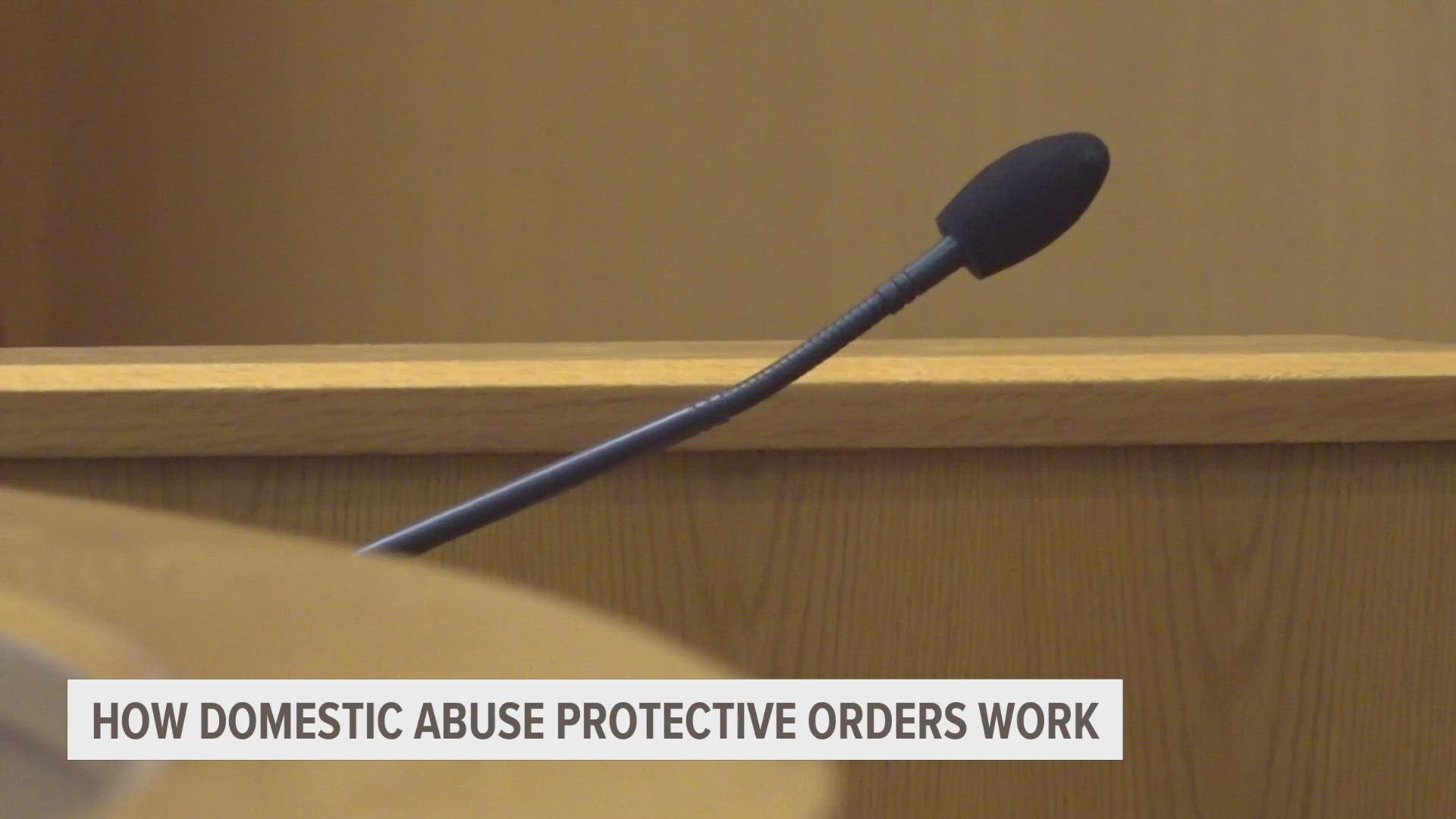DES MOINES, Iowa — There was a case earlier this week that ended with a suspect killed by police, and an officer shot by friendly fire.
It all began from what the Des Moines Police Department says was a violation of a protective order. But, as Local 5 uncovered, the suspect may not have been aware of the order.
Court records show that a temporary protective order related to alleged domestic abuse had been filed against the suspect, Weston Derby, around 4pm the afternoon prior. The reported domestic dispute was around 3:30am the following morning.
However, court records show that that order never got to Derby.
According to Drake Law Professor Sally Frank, in order for a domestic abuse-related temporary protective order to be filed, a judge must find the story credible enough to go to trial. The case will then be taken to trial, where both sides are heard, to determine whether or not a final protective order is appropriate. Though both a temporary and final order can provide certain, enforceable protections.
“Not to go near the victim, not to go near the victim’s home, not to go near the victim’s work, not to communicate with the victim themselves or through third parties, except through the attorneys," Frank said.
She clarified that, while specifics can be added, the general idea is staying away, not stalking, no harassment and no communication. However, there is a catch. If the defendant doesn't know about the order, it can't be enforced. This is why Frank says it is so important for those papers to get to the alleged offender.
“The sheriffs try to do it right away - within a day…,” she said.
And there’s a reason the protocol is to serve the order in person. Frank says officials need to have evidence that the alleged offender knows about the order.
“People have different emails, they don’t look at their email, you do want the person to actually know," she explained.
If the defendant makes contact with the victim after a protective order is filed -- but before the order was delivered -- authorities can serve the papers right then and there.
“They might arrest them on something else. If they broke into a house, they’ll arrest them on burglary and hand them the order, but, if they’re just at the doorstep and the only violation is the no contact order, they’ll serve the no contact order and tell them to go away," Frank said.
However, there is some nuance to it.
"For contempt, if they knew about it, even if they hadn't properly been served. Let's say they call her and she says 'You can't talk to me. I've got a no-contact order,' then they come to the house, you might be able to say they knew about it," Frank said.
She says, while protective orders do work with many domestic abuse cases, they’re not effective against all abusers.
“..., but, if someone’s intent on killing someone, the extra six months on top of life without parole is not going to be much of an inhibitor," Frank said.
She says, amid all these legal protections, sometimes it's still on the victim to be in charge of their own safety. Sometimes victims have to flee or turn to neighbors to keep an eye out for their abusers or reach out to local domestic violence organizations.
Frank says often what will make someone decide to go to court over domestic violence is when they have reason to believe something will happen to their kids.
One mistake Frank has seen victims make when this happens is going to authorities and using that as the grounds of why they need a protective order. If someone does this, Frank says their request will be denied because it doesn't fit into the definition of what domestic violence protective orders are for.
"With domestic violence, you have to prove that you've been the victim of the assault," Frank explained.
She says that, if the judge decides that a victim needs a protective order, what to do with the kids can be figured out in the terms and conditions of the protective order but that can't be the main reason you give to authorities as to why you're filing.
"It's not that the court doesn't care about the other. But the statute that allows you to get a no contact order requires that the relationship be domestic and that there be abuse of the victim," Frank explained.
She clarified the definition of domestic.
"So you have to be married, divorced, have a minor child together, have lived together - adults living together within the last year, or have an intimate relationship," Frank said.
She says, for the protective order, the abuse has to be physical abuse, sexual abuse, or the threat of abuse with the ability to carry that threat out.
"Let's say he hasn't touched her but he pulled a gun out and said 'Next time, I'm going to kill you,' that's a threat with the ability to carry it out," Frank explained.

